- Home
- Clive Cussler
Inca Gold dp-12 Page 13
Inca Gold dp-12 Read online
Page 13
They left the bridge, and he showed her through the ship's laboratory where a team of chemists and marine biologists were fussing over a dozen glass tanks teeming with a hundred different denizens from the deep, studying data from computer monitors, and examining microorganisms under microscopes.
"After retrieval from the bottom," said Pitt, "this is where the first step in the quest for new drugs begins."
"What is your part in all of this?" Shannon asked.
"Al Giordino and I operate the robotic vehicles that probe the seafloor for promising organism sites. When we think we've located a prime location, we go down in a submersible to collect the specimens."
She sighed. "Your field is far more exotic than mine."
Pitt shook his head. "I disagree. Searching into the origins of our ancestors can be pretty exotic in its own right. If we feel no attraction for the past, why do millions of us pay homage to ancient Egypt, Rome, and Athens every year? Why do we wander over the battlefields of Gettysburg and Waterloo or stand on the cliffs and look down on the beaches of Normandy? Because we have to look back into history to see ourselves."
Shannon stood silently. She had expected a certain coldness from a man whom she had watched kill without apparent remorse. She was surprised at the depth of his words, at his easy way of expressing ideas.
He spoke of the sea, of shipwrecks, and of lost treasure. She described the great archaeological mysteries waiting to be solved. There was mutual delight in this exchange, yet there was still an indefinable gap between them. Neither felt strongly attracted to the other.
They had strolled out on deck and were leaning over the railing, watching the white foam thrown from the Deep Fathom's bow slide past the hull and merge with the froth from the wake, when skipper Frank Stewart appeared.
"It's official," he said in his soft Alabama drawl, "we've been ordered to transport the Peruvian young people and Dr. Kelsey to Lima's port city of Callao."
"You were in communication with Admiral Sandecker?" inquired Pitt.
Stewart shook his head. "His director of operations, Rudi Gunn."
"After we set everyone on shore, I assume we sail back on-site and continue with the project?"
"The crew and I do. You and Al have been ordered to return to the sacred well and retrieve Dr. Miller's body."
Pitt looked at Stewart as if he were a psychiatrist contemplating a mental case. "Why us? Why not the Peruvian police?"
Stewart shrugged. "When I protested that the two of you were vital to the specimen collection operation, Gunn said he was flying in your replacements from NUMA's research lab in Key West. That's all he would say."
Pitt swung a hand toward the empty helicopter landing pad. "Did you inform Rudi that Al and I are not exactly popular with the local natives and that we're fresh out of aircraft?"
"No to the former." Stewart grinned. "Yes to the latter. American embassy officials are making arrangements for you to charter a commercial helicopter in Lima."
"This makes about as much sense as ordering a peanut butter sandwich in a French restaurant."
"If you have a complaint, I suggest you take it up with Gunn personally when he meets us on the dock in Callao."
Pitt's eyes narrowed. "Sandecker's right-hand man flies over sixty-five hundred kilometers from Washington to oversee a body recovery? What gives?"
"More than meets the eye, obviously," said Stewart. He turned and looked at Shannon. "Gunn also relayed a message to you from a David Gaskill. He said you'd recall the name."
She seemed to stare at the deck in thought for a moment. "Yes, I remember, he's an undercover agent with the U.S. Customs Service who specializes in the illicit smuggling of antiquities."
Stewart continued, "Gaskill said to tell you he thinks he's traced the Golden Body Suit of Tiapollo to a private collector in Chicago."
Shannon's heart fluttered and she gripped the handrail until her knuckles turned ivory.
"Good news?" asked Pitt.
She opened her mouth, but no sound came out. She looked stunned.
Pitt put his arm around her waist to support her. "Are you all right?"
"The Golden Body Suit of Tiapollo," she murmured reverently, "was lost to the world in a daring robbery at the Museo Nacional de Antropologia in Seville in 1922. There isn't an archaeologist alive who wouldn't sign away his or her pension to study it."
"What exactly makes it so special?" asked Stewart.
"It is considered the most prized artifact to ever come out of South America because of its historic significance," Shannon lectured, as if entranced. "The gold casing covered the mummy of a great Chachapoyan general known as Naymlap, from the toes to the top of the head. The Spanish conquerors discovered Naymlap's tomb in 1547 in a city called Tiapollo high in the mountains. The event was recorded in two early documents but today Tiapollo's precise location is unknown. I've only seen old black-and-white photos of the suit, but you could tell that the intricately hammered metalwork was breathtaking. The iconography, the traditional images, and the designs on the exterior were lavishly sophisticated and formed a pictorial record of a legendary event."
"Picture writing, as in Egyptian hieroglyphics?" asked Pitt.
"Very similar."
"What we might call an illustrated comic strip," added Giordino as he stepped out on deck.
Shannon laughed. "Only without the panels. The panels were never fully deciphered. The obscure references seem to indicate a long journey by boat to a place somewhere beyond the empire of the Aztecs."
"For what purpose?" asked Stewart.
"To hide a vast royal treasure that belonged to Huascar, an Inca king who was captured in battle and murdered by his brother Atahualpa, who was in turn executed by the Spanish conqueror Francisco Pizarro. Huascar possessed a sacred gold chain that was two hundred and fourteen meters long. One report given to the Spaniards by Incas claimed that two hundred men could scarcely lift it."
"Roughly figuring that each man hoisted sixty percent of his weight," mused Giordino, "you're talking over nine thousand kilograms or twenty thousand pounds of gold. Multiply that by twelve troy ounces . . ."
"And you get two hundred and forty thousand ounces," Pitt helped out. Giordino's calculating expression suddenly crumbled into blank astonishment. "Oh my God. On today's gold market that works out to well over a hundred million dollars."
"That can't be right," scoffed Stewart.
"Compute it for yourself," muttered Giordino, still stupefied.
Stewart did, and his face went as blank as Giordino's. "Mother of heaven, he's right."
Shannon nodded. "That's just the price of the gold. As an artifact it is priceless."
"The Spanish never got their hands on it?" Pitt asked Shannon.
"No, along with a vast hoard of other royal wealth, the chain disappeared. You've probably all heard the story of how Huascar's brother Atahualpa tried to buy his freedom from Pizarro and his conquistadors by offering to fill a room that measured seven meters in length by five meters wide with gold. Atahualpa stood on his tiptoes, reached up and drew a line around the room that was almost three meters from the floor, the height to which the gold would top out. Another smaller room nearby was to be filled with silver twice over."
"Has to be a world's record for ransom," mused Stewart.
According to the legend," Shannon continued, "Atahualpa seized massive numbers of golden objects from palaces, religious temples, and public buildings. But the supply was coming up short, so he went after his brother's treasures. Huascar's agents warned him of the situation, and he conspired to have his kingdom's treasures spirited away before Atahualpa and Pizarro could get their hands on them. Guarded by loyal Chachapoyan warriors, commanded by General Naymlap, untold tons of gold and silver objects, along with the chain, were secretly transported by a huge human train to the coast, where they were loaded on board a fleet of reed and balsa rafts that sailed toward an unknown destination far to the north."
"Is there any factual
basis to the story?" Pitt asked.
"Between the years 1546 and 1568, a Jesuit historian and translator, Bishop Juan de Avila, recorded many mythical accounts of early Peruvian cultures. While attempting to convert the Chachapoyan people to Christianity, he was told four different stories about a great treasure belonging to the Inca kingdom that their ancestors helped carry across the sea to an island far beyond the land of the Aztecs, where it was buried. Supposedly it is guarded by a winged jaguar until the day the Incas return and retake their kingdom in Peru."
"There must be a hundred coastal islands between here and California," said Stewart.
Shannon followed Pitt's gaze down to the restless sea. "There is, or I should say was, another source of the legend."
"All right," said Pitt, "let's hear it."
"When the Bishop was questioning the Cloud People, as the Chachapoyans were called, one of the tales centered on a jade box containing a detailed chronicle of the voyage."
"An animal skin painted with symbolic pictographs?"
"No, a quipu," Shannon replied softly.
Stewart tilted his head quizzically. "A what?"
"Quipu, an Inca system for working out mathematical problems and for record keeping. Quite ingenious, really. It was a kind of ancient computer using colored strands of string or hemp with knots placed at different intervals. The various color-coded strands signified different things -blue for religion, red for the king, gray for places and cities, green for people, and so forth. A yellow thread could indicate gold while a white one referred to silver. The placement of knots signified numbers, such as the passage of time. In the hands of a quipu-mayoc, a secretary or clerk, the possibilities of creating everything from records of events to warehouse inventories were endless. Unfortunately, most all the quipus, one of the most detailed statistical records of a people's history ever kept, were destroyed during the Spanish conquest and the oppression that followed."
Pitt said, "And this stringed instrument, if you'll forgive the pun, was used to give an account of the voyage, including time, distances, and location?"
"That was the idea," Shannon agreed.
"Any clues as to whatever became of the jade box?"
"One story claims the Spaniards found the box with its quipu and not knowing its value, sent it to Spain. But during shipment aboard a treasure galleon bound for Panama, the box, along with a cargo of precious artifacts and a great treasure of gold and silver, was captured by the English sea hawk, Sir Francis Drake."
Pitt turned and regarded her as he might a classic automobile he'd never seen before. "The Chachapoyan treasure map went to England?"
Shannon gave a helpless shrug. "Drake never mentioned the jade box or its contents when he reached England after his epic voyage around the world. Since then, the map has become known as the Drake quipu, but it was never seen again."
"A hell of a tale," Pitt muttered quietly. His eyes seemed to turn dreamlike as his mind visualized something beyond the horizon. "But the best part is yet to come."
Shannon and Stewart both stared at him. Pitt's gaze turned skyward as a sea gull circled the ship and then winged toward land. There was a look of utter certainty in his eyes as he faced them again, a crooked smile curving his lips, the wavy strands of his ebony hair restless in the breeze.
"Why do you say that?" Shannon asked hesitantly.
"Because I'm going to find the jade box."
"You're putting us on." Stewart laughed.
"Not in the least." The distant expression on Pitt's craggy face had changed to staunch resolve.
For a moment Shannon was stunned. The sudden change from his previous mocking skepticism was totally unexpected. "You sound like you're on the lunatic fringe."
Pitt tilted his head back and laughed heartily. "That's the best part about being crazy. You see things nobody else can see."
St. Julien Perlmutter was a classic gourmand and bon vivant. Excessively fond of fine food and drink, he reveled in sociable tastes, possessing an incredible file of recipes from the renowned chefs of the world and a cellar with more than 4000 bottles of vintage wine. A host with an admirable reputation for throwing gourmet dinners at elegant restaurants, he paid a heavy price. St. Julien Perlmutter weighed in at close to 181 kilograms (400 pounds). Scoffing at physical workouts and diet foods, his fondest wish was to enter the great beyond while savoring a 100-year-old brandy after a sumptuous meal.
Besides eating, his other burning passion was ships and shipwrecks. He had accumulated what was acknowledged by archival experts as the world's most complete collection of literature and records on historic ships. Maritime museums around the world counted the days until overindulgence did him in, so they could pounce like vultures and absorb the collection into their own libraries.
There was a reason Perlmutter always entertained in restaurants instead of at his spacious carriage house in Georgetown outside the nation's capital. A gigantic mass of books was stacked on the floor, on sagging shelves, and in every nook and cranny of his bedroom, the living and dining rooms, and even in the kitchen cabinets. They were piled head-high beside the commode in his bathroom and were scattered like chaff on the king-size waterbed. Archival experts would have required a full year to sort out and catalogue the thousands of books stuffed in the carriage house. But not Perlmutter. He knew precisely where any particular volume was stashed and could pick it out within seconds.
He was dressed in his standard uniform of the day, purple pajamas under a red and gold paisley robe, standing in front of a mirror salvaged from a stateroom on the Lusitania, trimming a magnificent gray beard, when his private line gave off a ring like a ship's bell.
"St. Julien Perlmutter here. State your business in a brief manner."
"Hello, you old derelict."
"Dirk!" he boomed, recognizing the voice, his blue eyes twinkling from a round crimson face. "Where's that recipe for apricot sautéed prawns you promised me?"
"In an envelope on my desk. I forgot to mail it to you before I left the country. My apologies."
"Where are you calling from?"
"A ship off the coast of Peru."
"I'm afraid to ask what you're doing down there."
"A long story."
"Aren't they all?"
"I need a favor."
Perlmutter sighed. "What ship is it this time?"
"The Golden Hind."
"Francis Drake's Golden Hind?"
"The same."
"Sic parvis magna," Perlmutter quoted. "Great things have small beginnings. That was Drake's motto. Did you know that?"
"Somehow it escaped me," Pitt admitted. "Drake captured a Spanish galleon--"
"The Nuestra Senora de la Concepcion,'' " Perlmutter interrupted. "Captained by Juan de Anton, bound for Panama City from Callao de Lima with a cargo of bullion and precious Inca artifacts. As I recall, it was in March of 1578."
There was a moment of silence at the other end of the line. "Why is it when I talk to you, Julien, you always make me feel as if you took away my bicycle?"
"I thought you'd like a bit of knowledge to cheer you up." Perlmutter laughed. "What precisely do you wish to know?"
"When Drake seized the Concepcion, how did he handle the cargo?"
"The event was quite well recorded. He loaded the gold and silver bullion, including a hoard of precious gems and pearls, on board the Golden Hind. The amount was enormous. His ship was dangerously overloaded, so he dumped several tons of the silver into the water by Cano Island off the coast of Ecuador before continuing on his voyage around the world."
"What about the Inca treasures?"
"They were left in the cargo holds of the Concepcion. Drake then put a prize crew on board to sail her back through the Magellan Strait and across the Atlantic to England."
"Did the galleon reach port?"
"No," answered Perlmutter thoughtfully. "It went missing and was presumed lost with all hands."
"I'm sorry to hear that," said Pitt, disappointment in his
voice. "I had hopes it might have somehow survived."
"Come to think of it," recalled Perlmutter, "a myth did arise concerning the Concepcion's disappearance."
"What was the gist of it?"
"A fanciful story, little more than rumor, said the galleon was caught in a tidal wave that carried it far inland. Never verified or documented, of course."
"Do you have a source for the rumor?"
"Further research will be needed to verify details, but if my memory serves me correctly, the tale came from a mad Englishman the Portuguese reported finding in a village along the Amazon River. Sorry, that's about all I can give you on the spur of the moment."
"I'd be grateful if you dug a little deeper," said Pitt.
"I can give you the dimensions and tonnage of the Concepcion, how much sail she carried, when and where she was built. But a crazy person wandering around a rain forest calls for a source outside my collection."
"If anyone can track down a sea mystery, you can."
"I have an utter lack of willpower when it comes to delving into one of your enigmas, especially after we found old Abe Lincoln on a Confederate ironclad in the middle of the Sahara Desert together."
"I leave it to you, Julien."
"Ironclads in a desert, Noah's Ark on a mountain, Spanish galleons in a jungle. Why don't ships stay on the sea where they belong?"
"That's why you and I are incurable lost shipwreck hunters," said Pitt cheerfully.
"What's your interest in this one?" Perlmutter asked warily.
"A jade box containing a knotted cord that gives directions to an immense Inca treasure."
Perlmutter mulled over Pitt's brief answer for several seconds before he finally said,
"Well, I guess that's as good a reason as any."
Hiram Yaeger looked as if he should have been pushing a shopping cart full of shabby belongings down a back alley. He was attired in a Levi's jacket and pants, his long blond hair tied in a loose ponytail, and his boyish face half-hidden by a scraggly beard. The only shopping cart Yaeger ever pushed, however, was down the delicatessen aisle of a supermarket. A stranger would have been hard-pressed to imagine him living in a fashionable residential area of Maryland with a lovely artist wife and two pretty, smart teenage girls in private school, and driving a top-of-the-line BMW.

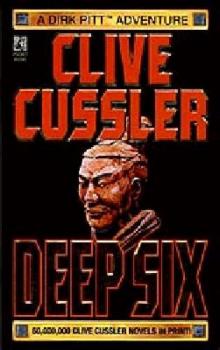 Deep Six
Deep Six Odessa Sea
Odessa Sea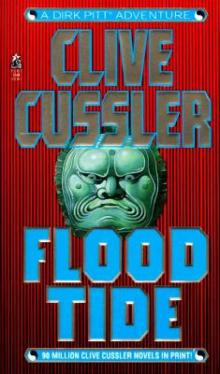 Flood Tide
Flood Tide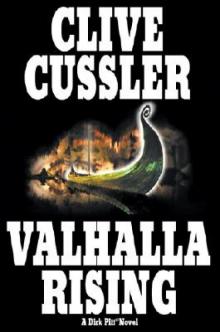 Valhalla Rising
Valhalla Rising Thriller 2
Thriller 2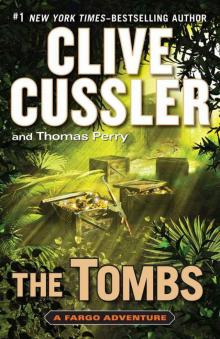 The Tombs
The Tombs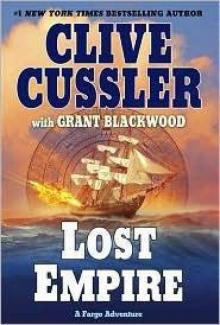 Lost Empire
Lost Empire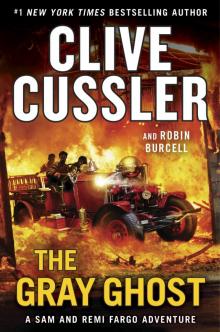 The Gray Ghost
The Gray Ghost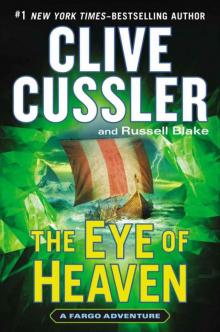 The Eye of Heaven
The Eye of Heaven Polar Shift
Polar Shift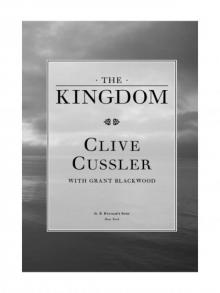 The Kingdom
The Kingdom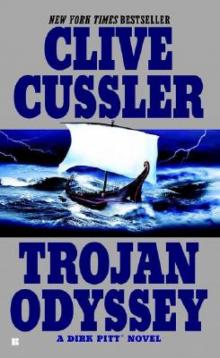 Trojan Odyssey
Trojan Odyssey Shadow Tyrants
Shadow Tyrants Nighthawk
Nighthawk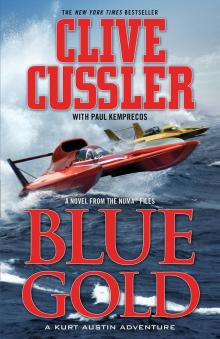 Blue Gold
Blue Gold Serpent
Serpent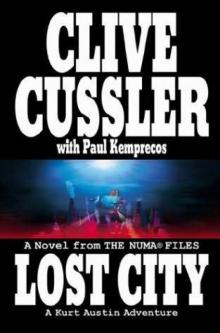 Lost City
Lost City The Gangster
The Gangster White Death
White Death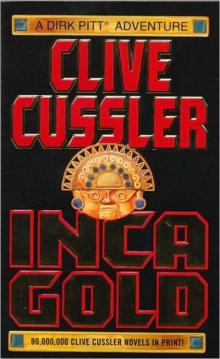 Inca Gold
Inca Gold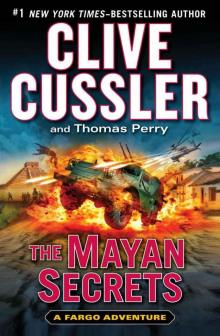 The Mayan Secrets
The Mayan Secrets The Pharaoh's Secret
The Pharaoh's Secret The Emperor's Revenge
The Emperor's Revenge Corsair
Corsair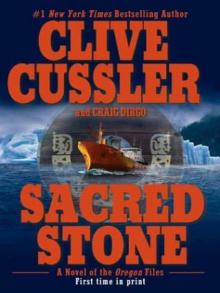 Sacred Stone
Sacred Stone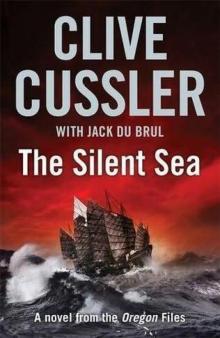 The Silent Sea
The Silent Sea The Rising Sea
The Rising Sea Black Wind
Black Wind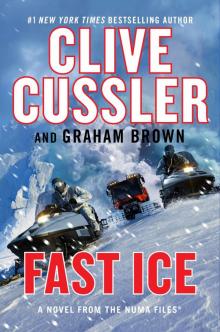 Fast Ice
Fast Ice Ghost Ship
Ghost Ship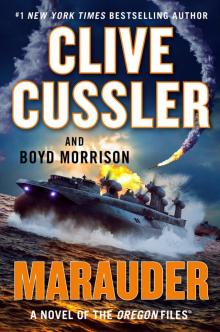 Marauder
Marauder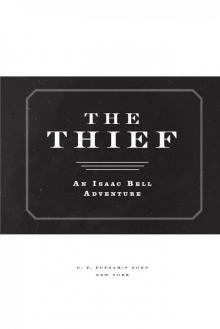 The Thief
The Thief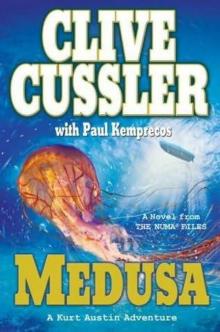 Medusa
Medusa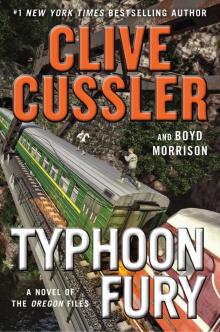 Typhoon Fury
Typhoon Fury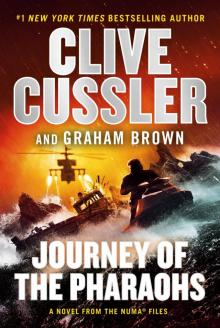 Journey of the Pharaohs
Journey of the Pharaohs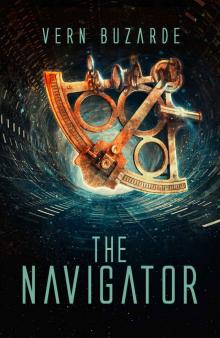 The Navigator
The Navigator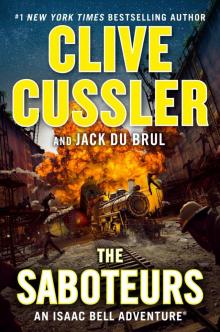 The Saboteurs
The Saboteurs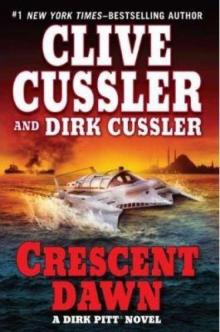 Crescent Dawn
Crescent Dawn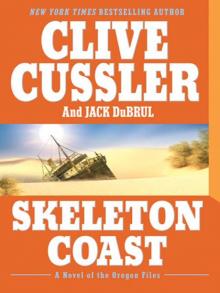 Skeleton Coast
Skeleton Coast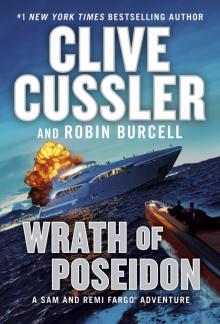 Wrath of Poseidon
Wrath of Poseidon The Mediterranean Caper
The Mediterranean Caper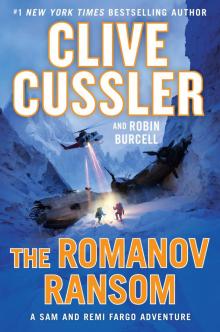 The Romanov Ransom
The Romanov Ransom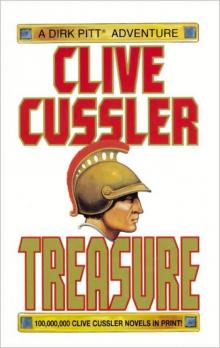 Treasure
Treasure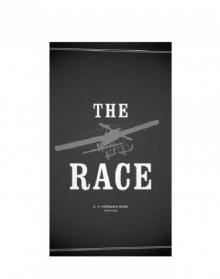 The Race
The Race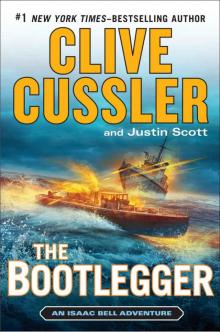 The Bootlegger
The Bootlegger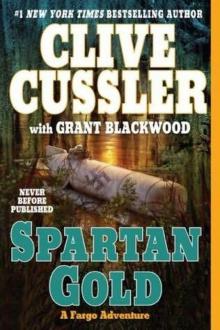 Spartan Gold
Spartan Gold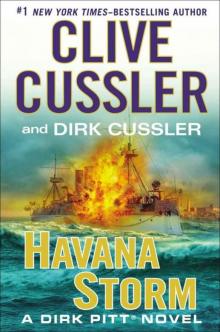 Havana Storm
Havana Storm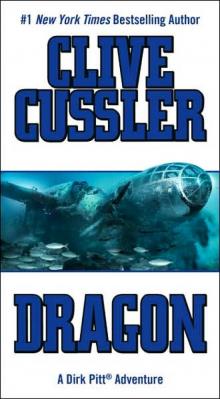 Dragon
Dragon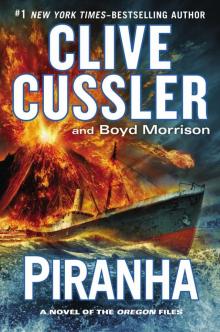 Piranha
Piranha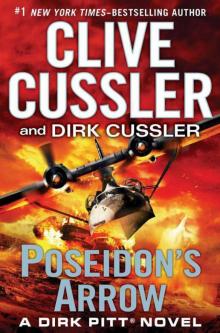 Poseidon's Arrow
Poseidon's Arrow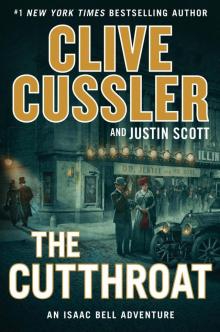 The Cutthroat
The Cutthroat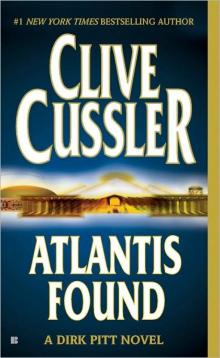 Atlantis Found
Atlantis Found The Jungle
The Jungle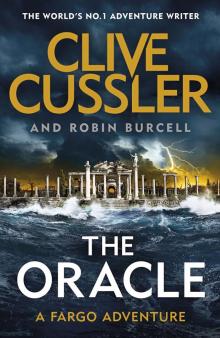 The Oracle
The Oracle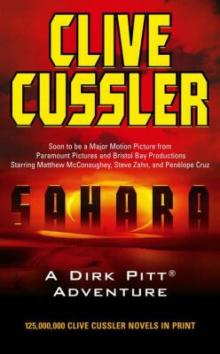 Treasure / Dragon / Sahara: Clive Cussler Gift Set
Treasure / Dragon / Sahara: Clive Cussler Gift Set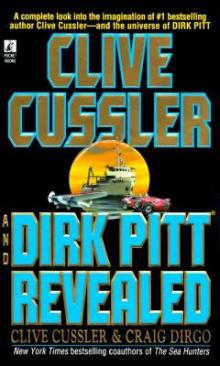 Clive Cussler and Dirk Pitt Revealed
Clive Cussler and Dirk Pitt Revealed The Sea Hunters
The Sea Hunters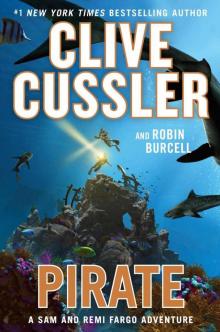 Pirate
Pirate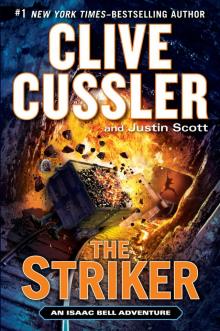 The Striker
The Striker Plague Ship
Plague Ship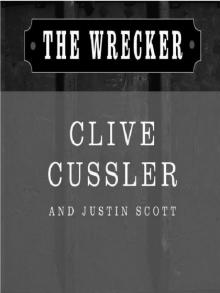 The Wrecker
The Wrecker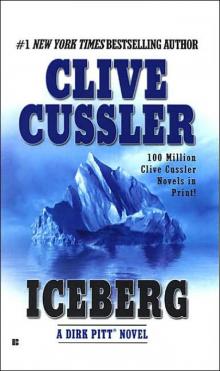 Iceberg
Iceberg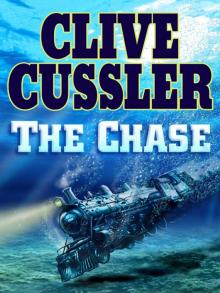 The Chase
The Chase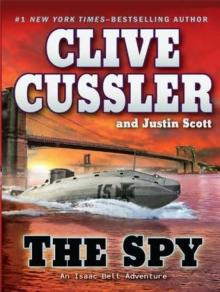 The Spy
The Spy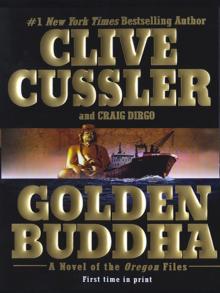 Golden Buddha
Golden Buddha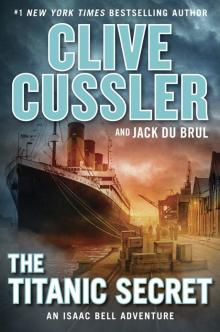 The Titanic Secret
The Titanic Secret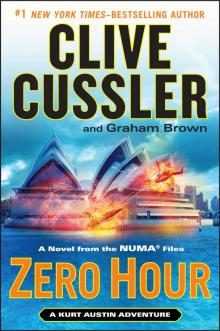 Zero Hour
Zero Hour Fire Ice
Fire Ice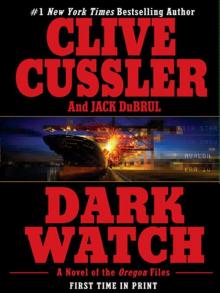 Dark Watch
Dark Watch The Storm
The Storm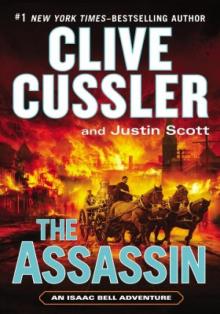 The Assassin
The Assassin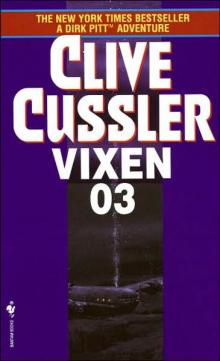 Vixen 03
Vixen 03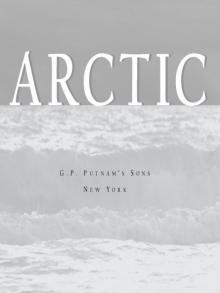 Arctic Drift
Arctic Drift Night Probe!
Night Probe! Cyclops
Cyclops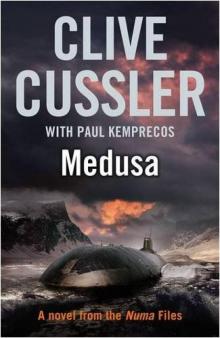 Medusa nf-8
Medusa nf-8 Shock Wave dp-13
Shock Wave dp-13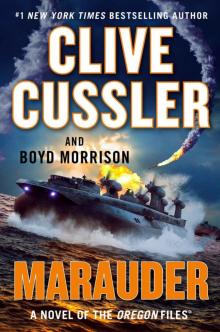 Marauder (The Oregon Files)
Marauder (The Oregon Files)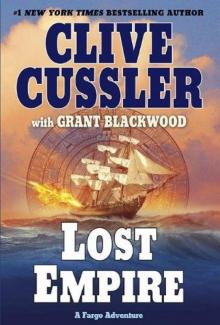 Lost Empire fa-2
Lost Empire fa-2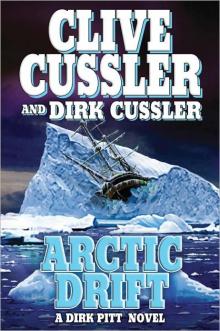 Arctic Drift dp-20
Arctic Drift dp-20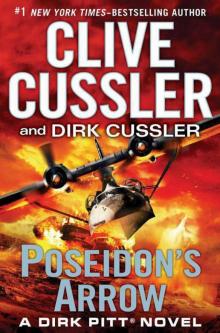 Dirk Pitt 22 - Poseidon's Arrow
Dirk Pitt 22 - Poseidon's Arrow Treasure of Khan dp-19
Treasure of Khan dp-19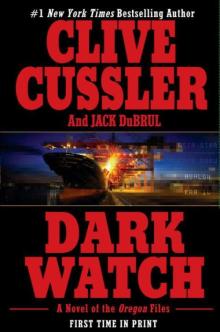 Dark Watch of-3
Dark Watch of-3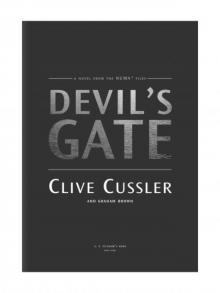 Devil's Gate
Devil's Gate The Sea Hunters II: More True Adventures with Famous Shipwrecks
The Sea Hunters II: More True Adventures with Famous Shipwrecks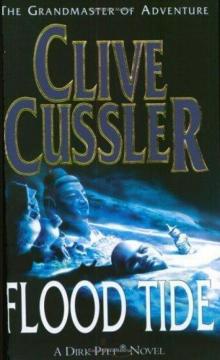 Flood Tide dp-14
Flood Tide dp-14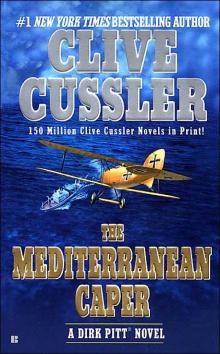 The Mediterranean Caper dp-2
The Mediterranean Caper dp-2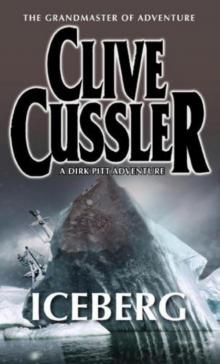 Iceberg dp-3
Iceberg dp-3 Sahara dpa-11
Sahara dpa-11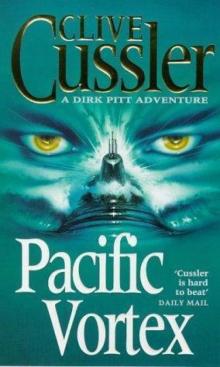 Pacific Vortex! dp-1
Pacific Vortex! dp-1 Deep Six dp-7
Deep Six dp-7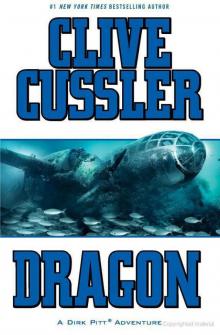 Dragon dp-10
Dragon dp-10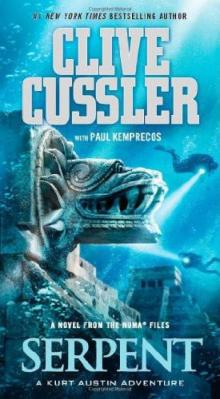 Serpent nf-1
Serpent nf-1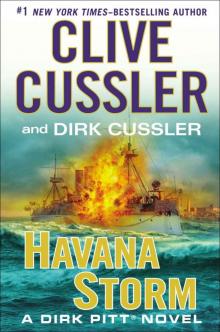 Havana Storm (Dirk Pitt Adventure)
Havana Storm (Dirk Pitt Adventure)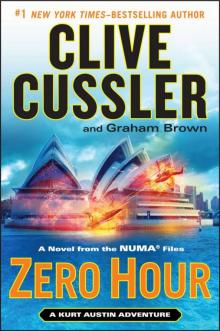 Zero Hour nf-11
Zero Hour nf-11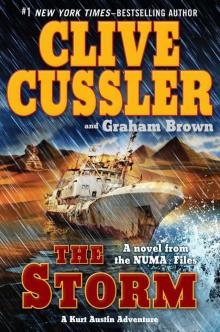 The Storm nf-10
The Storm nf-10 The Thief ib-5
The Thief ib-5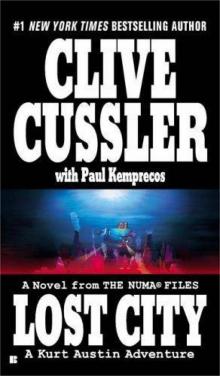 Lost City nf-5
Lost City nf-5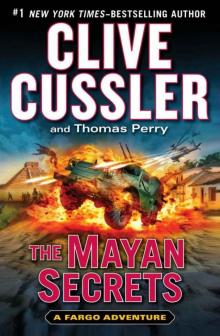 The Mayan Secrets fa-5
The Mayan Secrets fa-5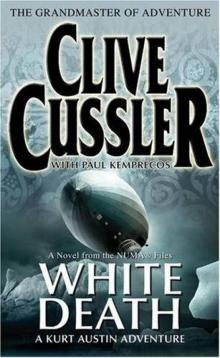 White Death nf-4
White Death nf-4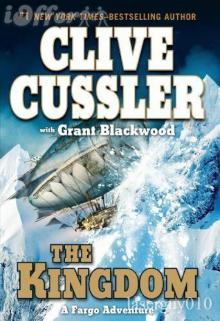 The Kingdom fa-3
The Kingdom fa-3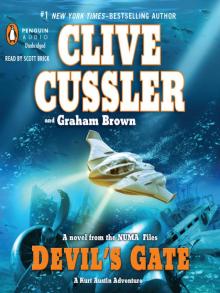 Devil's Gate nf-9
Devil's Gate nf-9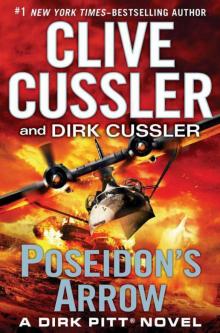 Poseidon's Arrow dp-22
Poseidon's Arrow dp-22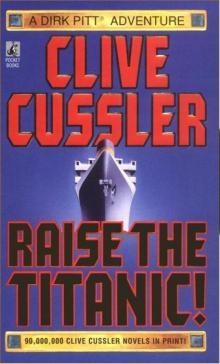 Raise the Titanic dp-4
Raise the Titanic dp-4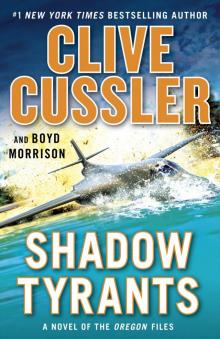 Shadow Tyrants--Clive Cussler
Shadow Tyrants--Clive Cussler Sacred Stone of-2
Sacred Stone of-2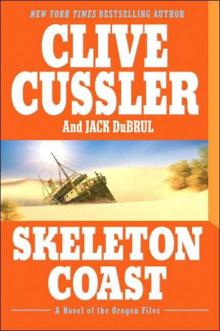 Skeleton Coast tof-4
Skeleton Coast tof-4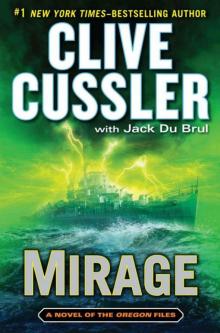 Mirage tof-9
Mirage tof-9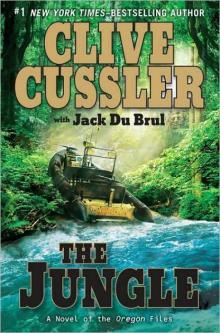 The Jungle of-8
The Jungle of-8 The Emperor's Revenge (The Oregon Files)
The Emperor's Revenge (The Oregon Files)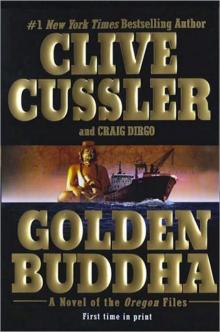 Golden Buddha of-1
Golden Buddha of-1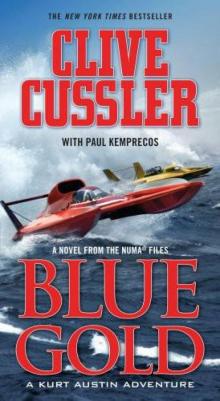 Blue & Gold
Blue & Gold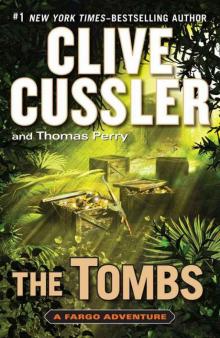 The Tombs fa-4
The Tombs fa-4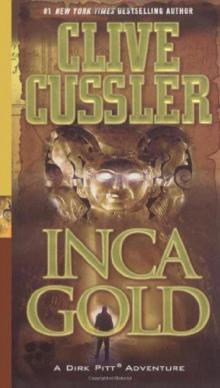 Inca Gold dp-12
Inca Gold dp-12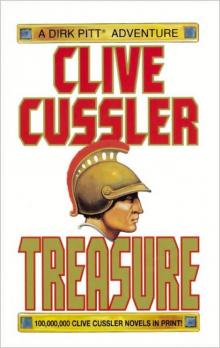 Treasure dp-9
Treasure dp-9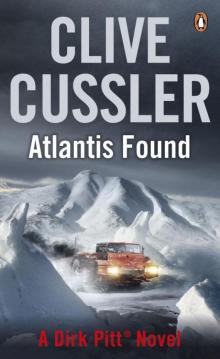 Atlantis Found dp-15
Atlantis Found dp-15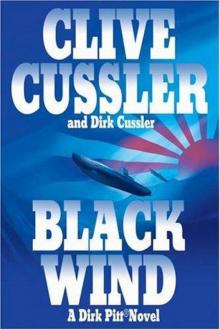 Black Wind dp-18
Black Wind dp-18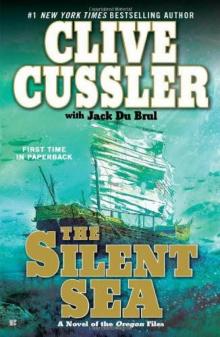 the Silent Sea (2010) tof-7
the Silent Sea (2010) tof-7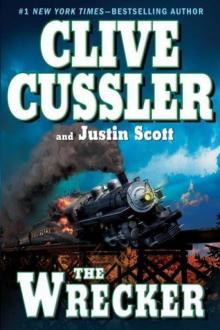 The Wrecker ib-2
The Wrecker ib-2 Fire Ice nf-3
Fire Ice nf-3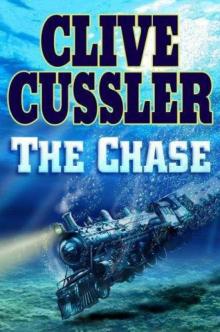 The Chase ib-1
The Chase ib-1 Sahara
Sahara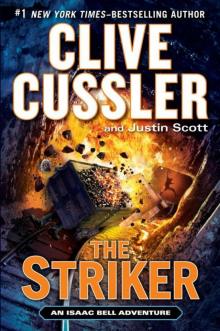 The Striker ib-6
The Striker ib-6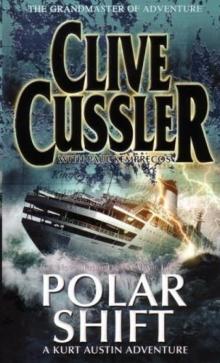 Polar Shift nf-6
Polar Shift nf-6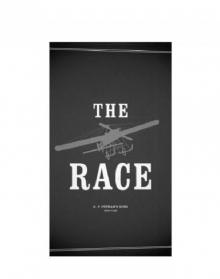 The Race ib-4
The Race ib-4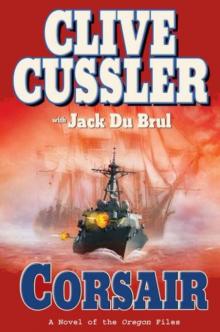 Corsair of-6
Corsair of-6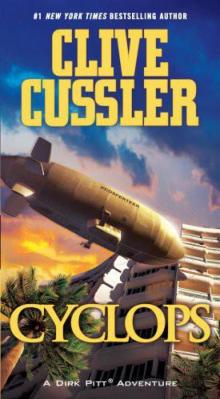 Cyclops dp-8
Cyclops dp-8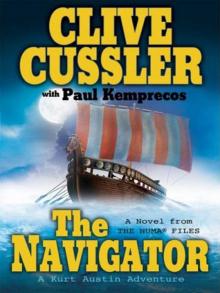 The Navigator nf-7
The Navigator nf-7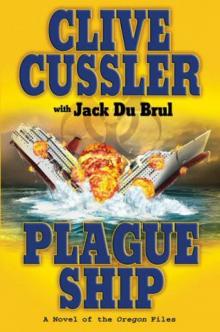 Plague Ship tof-5
Plague Ship tof-5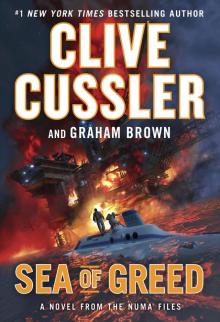 Sea of Greed
Sea of Greed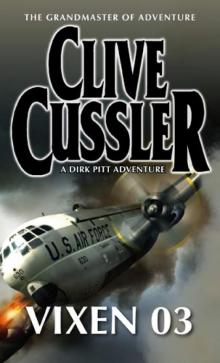 Vixen 03 dp-5
Vixen 03 dp-5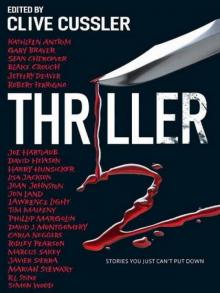 Thriller 2: Stories You Just Can't Put Down
Thriller 2: Stories You Just Can't Put Down